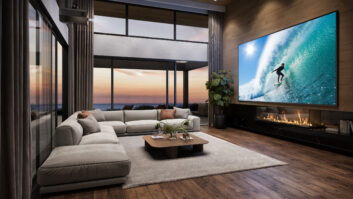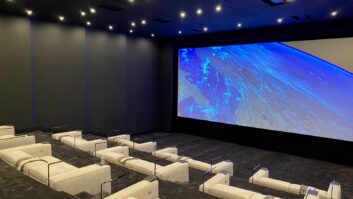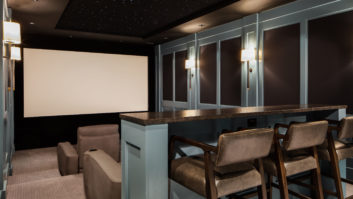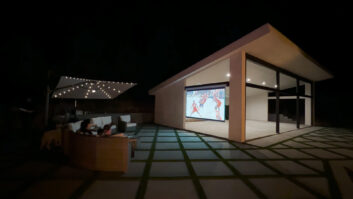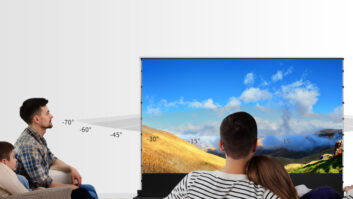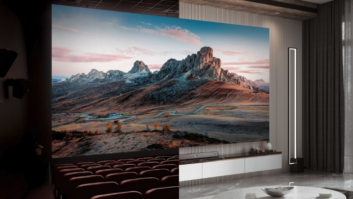Projector technology has never been better, but it can only reach its full potential when paired with the ideal partner — the right projection screen.
“We are probably very different in that we don’t use calculations,” says David Huse, founder/CEO, Theater Advice, a Screen Innovations dealer. “I use throw distance and get the client the biggest screen we can. Projectors are brighter now and can handle it. Screen size — no matter what it is — will ‘normalize’ to a client over time. So going bigger, if possible, will always prolong the wow factor of the clients’ room and experience. I tell everyone to go big and they all thank me for it.”
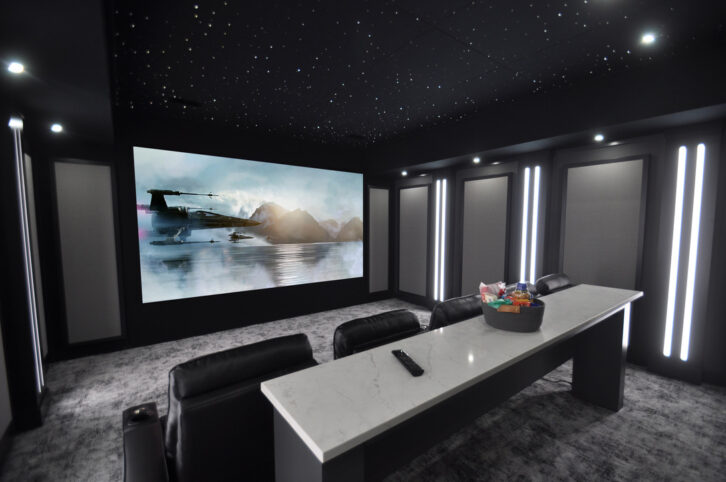
Screen selection is a budget-conscious decision, he adds. “We go against the grain when it comes to screens. The entire thought of, ‘I have a dark room so I need a white screen’ is just plain wrong. What do you mean by dark? That there are no reflective surfaces? Then okay! Otherwise, a good ALR screen will shine in any room over a white screen because projectors DO NOT make black. Black comes from the screen and the screen’s ability to reject the light bounce caused by the projector itself. So, if people can afford the ALR screens — Black Diamond, Slate — we always do that. If not, we go to white screens and explain what they will want to do to make it look better.”
Related: LED Displays vs. Projection Systems
Elite Screens offers many screen types and materials, says Benjamin Ramos, design and marketing specialist for the company. “In order to narrow it down, we look at the type of projector that is going to be used,” he says. “Once we find out if the projector is either an ultra-short-throw, short-throw, or standard-throw projector, we can begin to select the type of screen that will be compatible.”
In addition to projector compatibility, the environment where the screen will be used is also important, he notes. “We look at whether the room has controlled lighting or if there will be ambient light. Depending on these factors, we can then recommend a specialty material that reflects ambient light or a regular matte white material for viewing in a dark room. We offer sample material swatches of all screen materials that can be used to demo a projection display. These really come in handy, as they don’t require installation and can provide a quick preview to the client of what the projection will look like. Once a decision is made on the screen material, size, screen format, and aspect ratio will be the last pieces of the puzzle. These final components depend mostly on preference and what the client is comfortable viewing.”
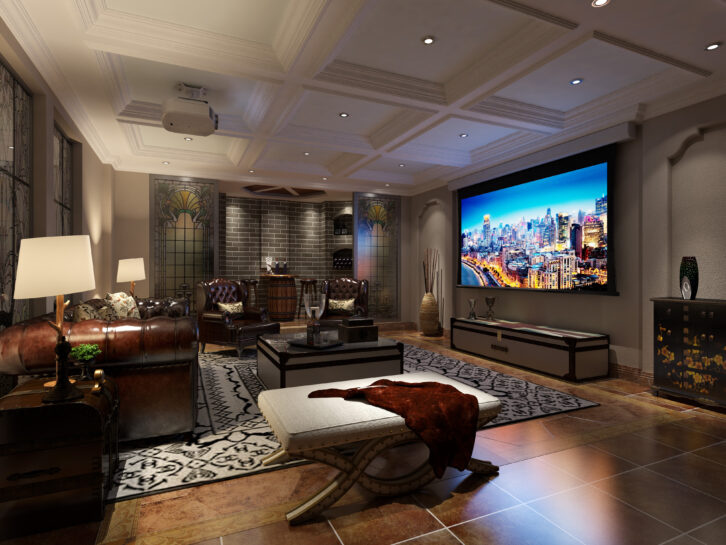
At Draper, room conditions, the performance requirements of the client, and the project budget represent the initial considerations, says Clint Childress, director of residential markets, Draper. “There are several factors we need to assess for the kind of performance people are looking for in their own homes. Lighting conditions and control, projector brightness, room size and orientation, seating, and content are some of the factors we look at.”
Although there are many options, he adds, the selection is driven by three main recommendations from Draper’s TecVision line to simplify the process. “Depending on the conditions, we recommend a gray screen for ultra-short-throw projection, a 1.3 gain white surface for light-controlled spaces, or an ALR surface where there is little or no light control. If none of those three surfaces give the performance we’re looking for in a specific setting, then integrators can take light measurements using our online projection planner to better fine-tune the screen to the room.”
And the Winners Are…
The final screen choice varies with what the homeowner is looking for. “For multi-use spaces, or if they just prefer a concealed screen, our Access V is popular,” says Childress. “People particularly like this option in conjunction with our AeroLift projector lift so everything is out of the way when not in use. The Acumen wall-mounted roller screen we introduced a couple of years ago is also popular because it has a nice modern look. Fixed frame screens are very popular in this market, though, and we’re getting ready to introduce a new model due to that popularity.”
Elite’s Fixed-Frame and Electric Roll-up screens are big sellers in today’s home theater projects, according to Ramos. “Fixed-frame screens are ideal for dedicated wall spaces for theater rooms or living rooms in need of the proverbial larger-than-life video displays,” he says. “Electric roll-up screens suit environments where the room is multi-purpose. This format allows for the screen to essentially ‘go away’ when not in use. This is ideal for interchangeable TV-to-big-screen media rooms or a ‘living room by day and theater by night’ application.”
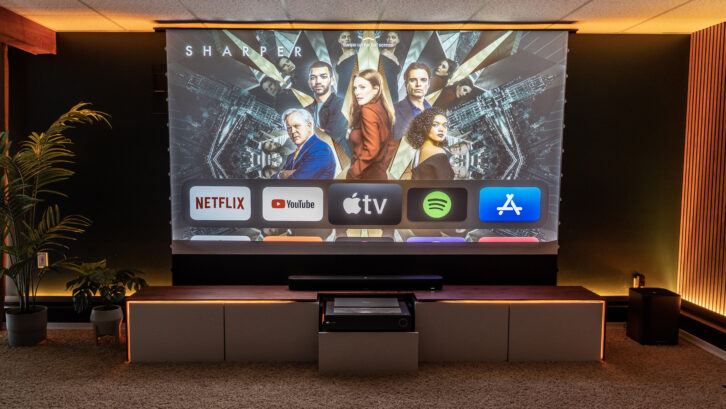
Huse says Theater Advice is installing lots of SI’s Slate screens due to its value vs. budget status. “In our opinion, that looks better than white in even the darkest of rooms. You have an entire AV world falsely convinced that projectors have ‘black levels’ when it’s scientifically impossible for a projector to make black. The absence of light, on a white screen, is white. The Black Diamond, which goes up to 120 inches, is the biggest win because it looks good in any light situation outside of direct sun. For anything bigger, we go Slate, and if the budget does not allow, we go with a white screen.”
Related: 6 Home Projection Trends
The trend that people are putting TVs in home theaters is a big mistake, he adds. “Yes, TVs are bigger, but a 98-inch TV in a theater isn’t big. Every day we meet the client who wants this. After talking with us, nine out of ten end up with a Slate screen and projector. One hundred percent of those are very happy they met us. A TV in a theater is just putting another living room in your home. If you have a home theater, put a theater in your home.”
